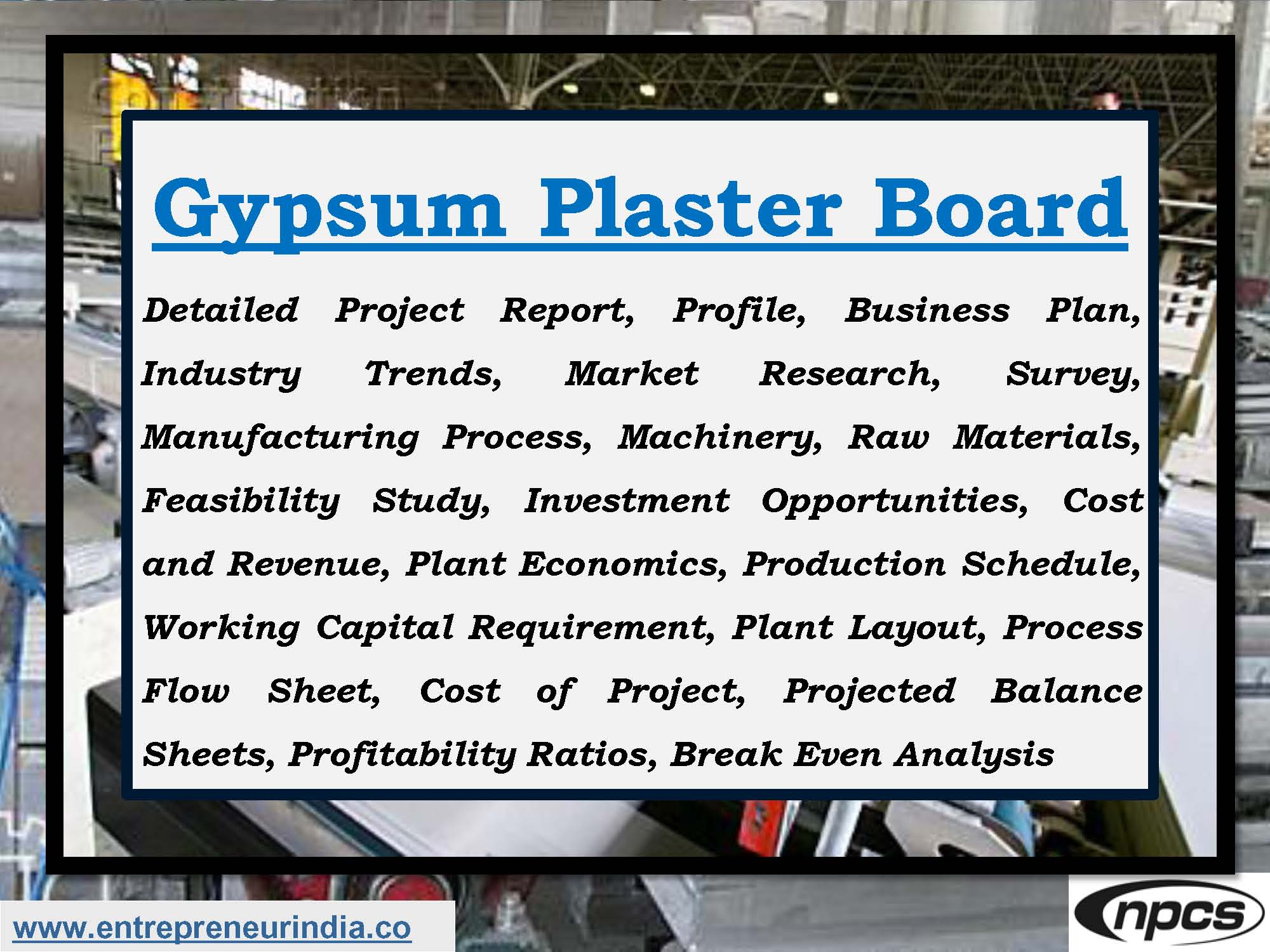
Gypsum Plaster Board is a widely used construction material known for its lightweight, durability, and ease of installation. It plays a significant role in modern building design, especially for ceilings, partition walls, and dry walling systems. The demand for high-quality, cost-effective, and eco-friendly construction materials has led to increased interest in manufacturing gypsum plaster boards. As the construction industry grows in both urban and semi-urban areas, setting up a Gypsum Plaster Board plant can be a highly profitable business opportunity. Moreover, entrepreneurs benefit from low raw material costs and growing market needs in real estate and infrastructure development.
Gypsum Plaster Board Report | Process & Business Plan
Starting a Gypsum Plaster Board manufacturing unit involves understanding the raw materials, technical setup, plant layout, and business model. This section covers the essential steps from raw material sourcing to production and distribution, along with financial planning and market potential.
See Also : Essential Oils & Oleoresins Extraction
Raw Materials & Basic Composition
The core ingredient in gypsum boards is calcium sulfate dihydrate (CaSO?·2H?O), commonly known as gypsum. Other supporting materials include:
-
Paper backing (kraft paper)
-
Starch or foaming agents
-
Additives for fire resistance or moisture control
The materials are inexpensive and readily available, making the business model scalable and cost-efficient. Moreover, synthetic gypsum from industrial waste sources can be used to promote environmental sustainability.
Manufacturing Process Overview
The Gypsum Plaster Board manufacturing process typically follows these steps:
-
Crushing & Grinding: Raw gypsum is crushed and ground into a fine powder.
-
Calcination: The powder is heated in a kiln to produce calcium sulfate hemihydrate (plaster of Paris).
-
Board Forming: The plaster slurry is poured between two continuous sheets of paper.
-
Drying: Boards are passed through dryers to remove excess moisture.
-
Cutting & Trimming: Boards are cut into desired sizes and inspected for quality.
-
Packaging: Finished boards are stacked, labeled, and packed for shipment.
The entire process can be automated with minimal labor involvement, ensuring consistent quality and volume production.
Plant Setup & Machinery
To establish a small-to-medium scale unit, you will need:
-
Crushers and grinders
-
Rotary kiln or calciner
-
Board forming line
-
Drying chamber
-
Automatic cutter and stacker
-
Packaging unit
Moreover, land availability near construction hubs or industrial zones adds value by reducing logistics costs. Energy-efficient dryers and recycling units for paper edges can also improve profitability.
Quality Control & Standards
To compete in the construction sector, your product must meet BIS or ASTM standards. Common quality checks include:
-
Board thickness and density
-
Moisture content
-
Flexural strength
-
Surface smoothness
-
Fire and water resistance (for special boards)
Moreover, maintaining quality consistency helps you establish trust with real estate developers, contractors, and interior designers.
Market Potential & Target Customers
India’s real estate, commercial infrastructure, and modular construction segments are growing fast. Target customers for Gypsum Plaster Board products include:
-
Builders and developers
-
Architects and interior designers
-
Plywood and hardware distributors
-
Contractors for civil projects
-
Modular office and home interior companies
Moreover, the rising demand for quick-installation and lightweight alternatives to brick walls is fueling growth in urban and rural markets alike.
Business Model & Revenue Plan
A typical Gypsum Plaster Board business can operate as:
-
B2B manufacturer supplying to construction firms
-
B2C brand offering retail-size boards for homes
-
OEM manufacturer producing for established brands
Revenue comes from high-volume orders, especially if you cater to industrial or government projects. Offering custom sizes or fire-retardant boards can improve your margins. Moreover, adding accessories like joint fillers or metal framing kits can create value-added revenue streams.
Licensing, Compliance & Certifications
You will need the following:
-
MSME/Udyam registration
-
GST and Factory license
-
Environmental clearance (if large-scale)
-
BIS certification for board quality
Moreover, ensuring worker safety, fire protocols, and waste management will help in meeting compliance requirements and attracting B2B clients.
Profitability & Investment Highlights
Though exact figures depend on plant size, a small setup can yield excellent returns due to:
-
Low raw material and energy costs
-
Steady demand from urban and rural construction
-
Minimal manpower and high automation potential
Moreover, gypsum board usage is growing in prefab housing, commercial fit-outs, and green buildings, making long-term growth highly likely.
Read More :Metal Finishing
Conclusion
The Gypsum Plaster Board industry presents a profitable business opportunity aligned with India’s fast-growing infrastructure sector. From affordable housing to premium interiors, gypsum boards are replacing conventional methods due to their efficiency and ease of use. Moreover, manufacturers can expand into allied products, offer custom solutions, and build partnerships with the booming construction ecosystem. If you’re looking to start a scalable, high-demand, and sustainable business, gypsum plaster board manufacturing offers the perfect launchpad.





